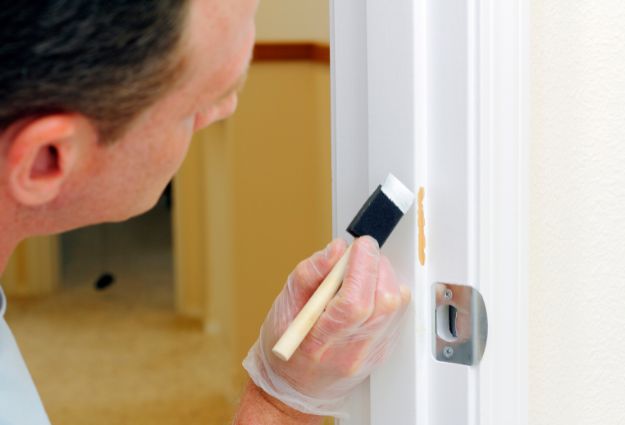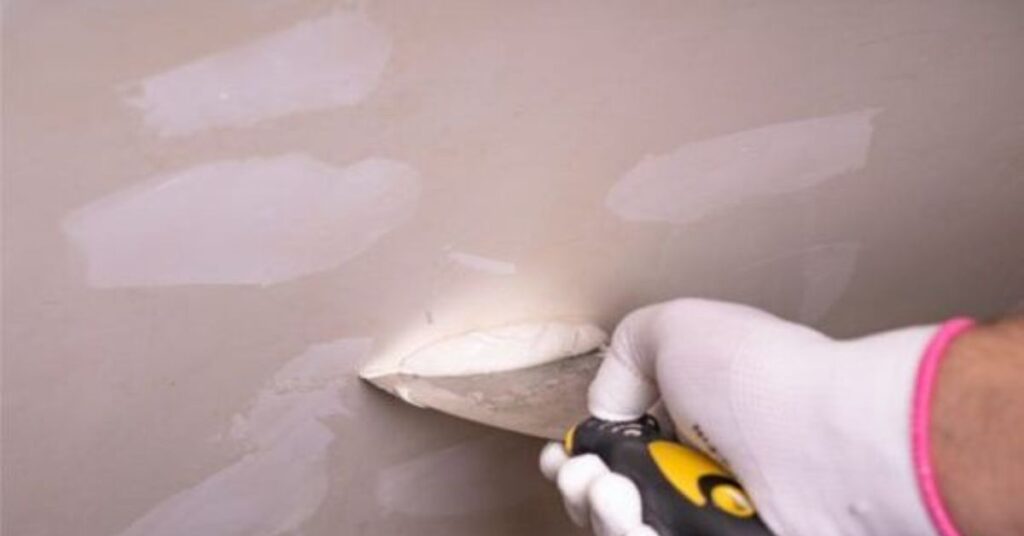Paint defects or damages are part of having a wonderful wall in your precious place. Instead of panicking, accept that you have to touch up the wall.
Not easy? Well, not that tough either! Let us have a look at what steps can make your How to touch up paint that was sprayed on learning worth spending valuable time!
How to Touch up Paint that was Sprayed on – Step By Step Guideline
To touch up your wall sprayed wall paint you need some tools and hacks. You have to clean up and repair the place if needed for the best application of the touch-up paint. Here, I have pointed out the tricks to get the work done easily and perfectly.
Choose the best touch up painting materials
For me, the first rule for painting is ‘no negotiation’ while choosing the paint. Always choose the high-quality wall paint and if you are to touch the paint there is another added rule; use the same paint for touch up which was used to do the paint earlier. These two rules can make things smoother beyond imagination. Choose the same brush and technique you used for the original coat.
You will need-
- Similar touch-up paint that was applied earlier
- A sander
- Putty knife
- Cleaning cloth or wipe
- Primer
- Paintbrush/roller/sprayer
Let it dry
The first mistake I remember from years ago that disgusted me the most was not letting my newly done teal blue wall dry enough to fix a little drip. So, let the wall paint dry completely before you attempt to fix it.
Otherwise, you will do the mistake in the first step and see the mismatch of color because the shade may vary while it dries. So, yeah I repeat, if you are trying to mend afresh sprayed wall, let it dry, keep it as it is for at least a day. Once you think it is completely desiccated you can go for the next step.
How long for touch up paint to dry on wall? Allow at the very least 2 weeks for touch-up layers to completely dry thoroughly, before judging whether you require to re-apply. When you use different application techniques with the very same paint job, touch-up troubles can take place.
Sand the spot
Now you may proceed to some undoing process. If it is a pretty big offending drip you can shear it off with something sharp like a putty blade. And then you will need a sanding sponge or a scotch brite to scrub off the place.
Sand the wall nicely in one direction for a finer finish. I find it better with a wet sand sponge, so yeah I soak my sponge for smooth sanding. Use a blue paper towel to soak up the water from the wall while wet sanding. Remember, soak your scrubber or sponge more often to avoid friction with the wall painting that might make it worst. So rinse and wipe clean until you get the best finishing.
Can you paint walls without sanding? No, That does not make your printing perfect. Sand over spot is an important step before painting.
Prime it up
Never do the mistake, don’t skip applying the primer part. Put on a good quality primer to see how the paint blends in with the older coat. Applying primer also let the paint stick perfectly.
Final touch up
In this step, you are good to put a layer of paint on the place and let it dry. Touch it with fingers, is there anything uneven? Be it or not, sand the place once again, and wipe off everything with a dry towel. And then as it dries and is fine, apply the second layer of paint. Do not panic and keep your coating light to avoid another mishap. If you are using spray paint you have to pay attention to the speed. You can do the detail work with spray paint finely.
Some Common FAQ’S About Touch up Painting
Some of your frequently asked questions have been answered below.
How to blend touch up paint on a wall?
Blending touch up paint on a wall requires proper cleaning and matching of the texture. Besides using the appropriate paint you have to follow a proper brushing technique. For a seamless blend, each stroke should be in the same direction, particularly the roller covers.
Also, adding 5-10% water to thin the paint helps bring a smooth finish. Always test beforehand with a small blotch to see if things are going in the right direction. On a textured surface, a paint sprayer is the best option since it is tough to get it done with a brush or roller.
How to touch up spray painted trim?
Touching up the trims can change the whole game. To make up the edges at first you need to clean it up as we did clean the wall. Clean and sand properly which prepares it to embrace the touch up. You can use synthetic finishing pads instead of sandpaper in trims. Check out if there is any hole and fill them with screws made with wood putty or nails. Put the paint with little strokes.
How to touch up spray paint with a brush?
Always use the type of brush you used to put the base layer. If you have used a roller earlier then use a roller if it was a brush then use that brush to touch.
For a small patch use a tiny foam brush and dab, for a bigger area load your brush with a small amount of paint and coat the prepared surface lightly. Some people think using a roller may end up applying too much paint. I think it depends on how much paint you are taking on your roller. For painting the mantra is always, a little goes a long way!
How to fix shiny touch up paint?
Using similar paint, brush and brushing techniques may prevent you from having shiny touch up paint. It is tough to match the touch-up color so the best way is to choose similar materials and techniques to avoid shiny touch up. You can add some water to the new paint to match the paint.
Final Verdict
The key answer to the question of how to touch up paint that was sprayed onis proper cleaning and matching the material. It does not matter how much effort you have given it is not going to work if these steps are not followed. If you cannot match the paint, go for professional help. Now, would you still say dealing with a paint run is tough or do you have the confidence to do drips more often? I think, yes!




